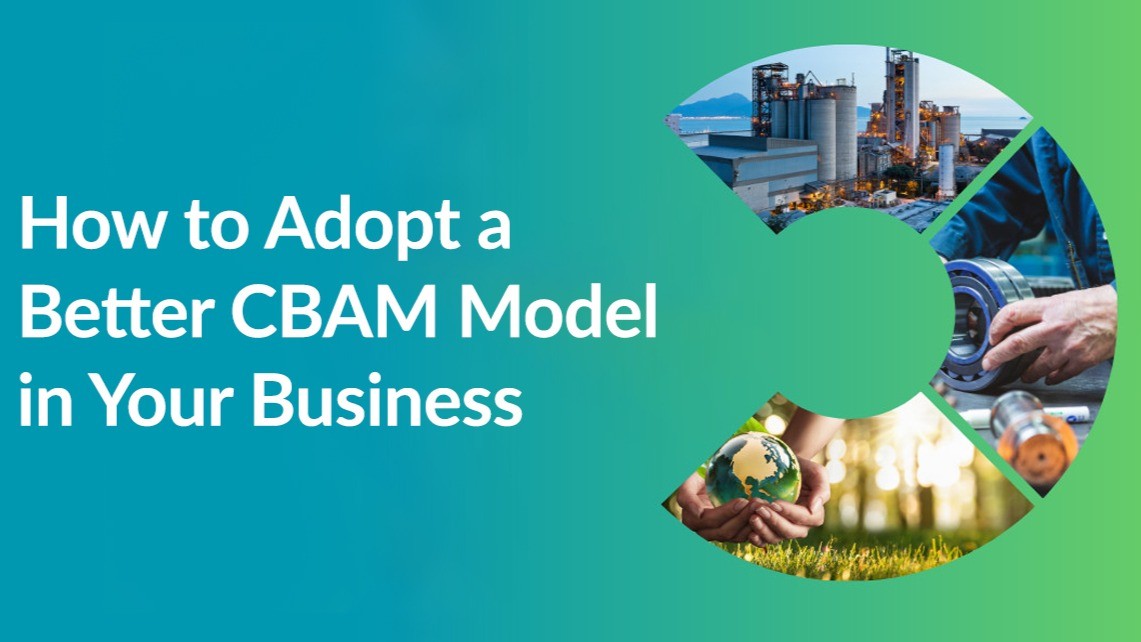As businesses around the globe face increasing pressure to adhere to environmental regulations, the Carbon Border Adjustment Mechanism (CBAM) has emerged as a critical component for ensuring fair competition and reducing carbon emissions. Here’s how businesses can adopt a fairer model for CBAM to align with sustainability goals and enhance their compliance.
1. Understand Regulatory Requirements
- Stay Informed: Keep abreast of CBAM regulations and guidelines in your region and any areas where you export or import goods. Regulations can vary, so ongoing awareness is crucial.
- Compliance: Ensure that your business practices meet CBAM requirements. This includes accurate reporting of carbon content and making necessary adjustments to align with the regulations.
2. Assess Carbon Footprint
- Carbon Audits: Conduct comprehensive carbon footprint audits of your products and supply chain. Identify areas with high emissions to target for reduction
- Life cycle Analysis: Implement lifecycle analysis to evaluate the total environmental impact of your products from production through disposal. This helps in understanding where improvements can be made.
3. Implement Emission Reduction Strategies
- Energy Efficiency: Invest in energy-efficient technologies and practices to lower emissions within your operations.
- Renewable Energy: Transition to renewable energy sources for powering your business activities, reducing reliance on fossil fuels.
- Sustainable Practices: Adopt sustainable practices in sourcing, production, and logistics to minimize your carbon footprint and enhance overall sustainability.
4. Engage with Supply Chain
- Supplier Collaboration: Work closely with your suppliers to help them reduce their carbon footprints and comply with CBAM requirements. This collaborative effort can lead to significant overall reductions in emissions.
- Green Procurement: Prioritize suppliers who have strong environmental credentials and offer low-carbon products. This helps ensure that your supply chain supports your sustainability goals.
5. Innovate and Invest in Green Technologies
- R&D Investments: Invest in research and development of low-carbon technologies and sustainable product innovations. This can drive long-term benefits and align with global environmental goals.
- Product Design: Design products with a lower environmental impact by considering factors like materials, manufacturing processes, and end-of-life disposal.
6. Revenue Recycling and Support Programs
- Internal Programs: Use any financial benefits from CBAM adjustments to fund internal sustainability projects and employee training programs. This not only supports compliance but also enhances overall business sustainability.
- Community Support: Contribute to local and global sustainability initiatives. Support communities affected by climate change through various outreach and support programs.
7. Transparent Reporting and Communication
- Sustainability Reporting: Regularly publish sustainability reports that detail your carbon footprint, reduction efforts, and CBAM compliance. Transparency builds trust and demonstrates commitment to sustainability.
- Stakeholder Engagement: Engage with stakeholders—including employees, customers, investors, and the public—about your CBAM efforts and overall sustainability goals. Effective communication fosters collaboration and support.
8. Employee Training and Awareness
- Training Programs: Implement training programs to educate employees about CBAM, sustainability practices, and their roles in reducing emissions. Informed employees are crucial to achieving your sustainability objectives.
- Incentives: Create incentives to encourage employees to participate in and contribute to sustainability initiatives. Motivation and engagement can drive better results.
9. Monitor and Evaluate Progress
- Performance Metrics: Establish key performance indicators (KPIs) to track progress in reducing emissions and improving sustainability. Regular monitoring ensures that you stay on track with your goals.
- Continuous Improvement: Regularly review and refine your strategies based on performance data and evolving best practices. Continuous improvement helps maintain and enhance your sustainability efforts.
10. Collaborate and Advocate
- Industry Collaboration: Collaborate with industry peers to share best practices and advocate for fair and effective CBAM policies. Collective efforts can lead to more impactful outcomes.
- Policy Advocacy: Engage with policymakers to support the development of equitable CBAM regulations that consider the needs of businesses and communities. Advocacy helps shape policies that benefit both the environment and the business community.
By integrating these strategies, businesses can effectively comply with CBAM regulations, contribute to a fairer global economy, and enhance their reputation and competitiveness in a carbon-constrained world. Adopting a fairer CBAM model not only aligns with environmental goals but also positions your business as a leader in sustainability.


